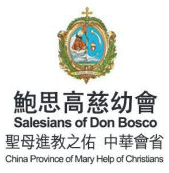
【慈幼通訊社 ─ 2019 年 11月 19 日中國香港慈幼會修院訊】 ─ 於香港舉行的東亞澳社會傳播及培育代表會議最後一天(11月19日),在越南培育委員Joseph Phuoc神父及新任東亞澳社會傳播委員Peter Chinh神父,一同主持的祝夜安後,便發送達210頁的新出版《慈幼詞典》(Salesian Dictionary)。三位在場的總部議員,Ivo神父、Filiberto神父及賢明漢神父,首先領取這印刷本。
詞典在東亞澳區的支持下得以出版。詞典經長時間編著,涵蓋了2014及2019年兩次東亞澳區翻譯員工作坊。慈幼詞典全面地整合了一連串與慈幼會相關,現今通用的英語詞彙(少部份為舊式詞彙)。大抵詞彙中的98%源自意大利語,另有些源自比哀蒙方言,是出自會祖及大部份會祖初期跟隨者的本地話。然而,隨著聖鮑思高的神恩在意大利以外建立起來,一些來自慈幼會的新詞彙,無可避免是發源自其他語言。
這本詞典經過多年謹慎的詞彙觀察及註解而發展起來的,主要環繞與慈幼會相關英語詞彙的意義及用法,亦包含一些源自其他語言,但已融入了英語體系的詞彙。這本詞典(比術語彙編更深入,更像是一本手冊)包含眾多資料。不只是因為一些詞彙較為複雜,包含多重意義,同時也由於詞彙在慈幼會用語中使用的一致性,發展自身的一套歷史,需要加以解釋。詞彙的整理與編著,便在翻譯者及尋求鮑思高慈幼神恩知識人士的腦海中萌生起來。
 東亞澳區慈幼家庭的翻譯員,共進行了兩次聚會(2014年在越南K’Long及2019年在緬甸Anisakan)。這兩場工作坊聚焦於區內的翻譯員,在建立不同語言的術語對照彙篇的重要性。由於英語是區內的「通用語」,可見最基本而有效的第一步,就是至少要建立英意組合的雙語術語彙篇,然而這並非局限於這兩種語言的組合,一些源自區內其他語言的詞彙也需收納進去。
東亞澳區慈幼家庭的翻譯員,共進行了兩次聚會(2014年在越南K’Long及2019年在緬甸Anisakan)。這兩場工作坊聚焦於區內的翻譯員,在建立不同語言的術語對照彙篇的重要性。由於英語是區內的「通用語」,可見最基本而有效的第一步,就是至少要建立英意組合的雙語術語彙篇,然而這並非局限於這兩種語言的組合,一些源自區內其他語言的詞彙也需收納進去。
當多於一詞或詞組表達同一意義時,第一項便是用來表達這基本意義的典型慈幼會用語,接著的便是可能適用於相關背景的同義詞。詞彙後方以斜體字來簡單表示詞性。如果詞彙首項多於一詞,詞性便可能是「詞組」(名詞、動詞等)、「諺語」或固定詞組,接著便是與詞彙相關的資料。有時候詞彙項附以用法,或額外標示的語言學註腳,用以表示相互參照的詞彙。
慈幼詞典印刷版本的出版,有賴中華會省社會傳播委員梁熾才神父的協助,並透過是次東亞澳區社會傳播及培育會議的參加者,得以發送到整個東亞澳區,及整個修會。電子版本可在鮑思高連結(Boscolink, https://www.bosco.link/sc/51524 )看到。我們感謝所有參與這寶貴工具書編著工作的慈幼會翻譯員及使命伙伴,並感謝及菲律賓北會省的Jerome Quinto神父,繪製了富吸引力的封面。
Second fruit of EAO Translators Workshop
(ANS – Salesian House of Studies, Hong Kong, China, 19 November 2019) – On the last day of the EAO Social communication and Formation delegates meeting in Hong Kong (18 November), after the shared goodnight given by the Vietnamese delegates for Formation (Fr. Joseph Phuoc) and Social Communication (Fr. Peter Chinh – newly appointed EAO coordinator for SC) the newly published ‘Salesian Dictionary’ (210 pages) was launched. The three General Councillors present – Frs. Ivo, Filiberto and Vaclav – were the first to receive a hard copy.
This dictionary has been published under the auspices of the East Asia-Oceania Region. It has been compiled over a long period of time covering two Workshops held by translators from the East Asia-Oceania Salesian region, one in 2014 the other in 2019. The Salesian Dictionary is a comprehensive effort to compile a list of terms in current (and sometimes in historical) use in Salesian discourse in English. Perhaps 98% of these terms have originated in Italian, some in the Piedmontese dialect, the vernacular of the founding Father and most of his first followers. But as Don Bosco’s charism became established outside of Italy, it was inevitable that new terms would arise with their origins in other languages.
This dictionary, which has developed over many years of careful lexical observation and annotation, is chiefly interested in meanings and usage relating to Salesian discourse in English, and includes terms that have entered that discourse from English and, indeed, other languages. The dictionary (it is far more than a glossary and more like a compendium) contains a great deal of information. Not only are some terms complicated, containing several meanings, but due to their consistent use in Salesian discourse, may have developed a history of their own and require some explanation. The compilation of terms has borne in mind both the translator and the seeker of knowledge regarding the Salesian charism of St John Bosco.
The East Asia-Oceania region has brought translators from the Salesian Family together on two occasions so far (2014 in K’Long, Vietnam, and 2019 in Anisakan, Myanmar). These workshops have insisted on the value of producing glossaries in the various word pairs that translators in the region are working with. And since English is the ‘lingua franca’ of the region, it was seen to be an essential first step to produce what would effectively be at least a bilingual glossary in the Italian-English language pair, but one not ultimately restricted to that pair should some terms originating from other languages in the region also need to be included.
Where there is more than one word or phrase given as meanings, the first of them is the primary sense of the term in normal Salesian discourse, followed by synonyms that may be appropriate in context. A simple indication of part of speech then follows in italics. If the headword consists of more than one word, the part of speech may be either a ‘phrase’ (Noun, Verb, etc.) or an ‘idiom’ or set phrase. Information regarding the term follows. In some instances, the entry concludes with usage or linguistic notes marked separately, indicating a cross-reference.
The hard copy of the Salesian Dictionary was published thanks to the care of China province SC Delegate, Fr. Pedro Leong and is being distributed around the EAO region and the whole Congregation through the participants in this EAO Soc.Com. and Formation Delegates meeting. The digital copy is available on the Boscolink. We are grateful to all Salesian translators and Lay mission partners who contributed to this precious tool, also with the attractive cover by Fr. Jerome Quinto (FIN).


